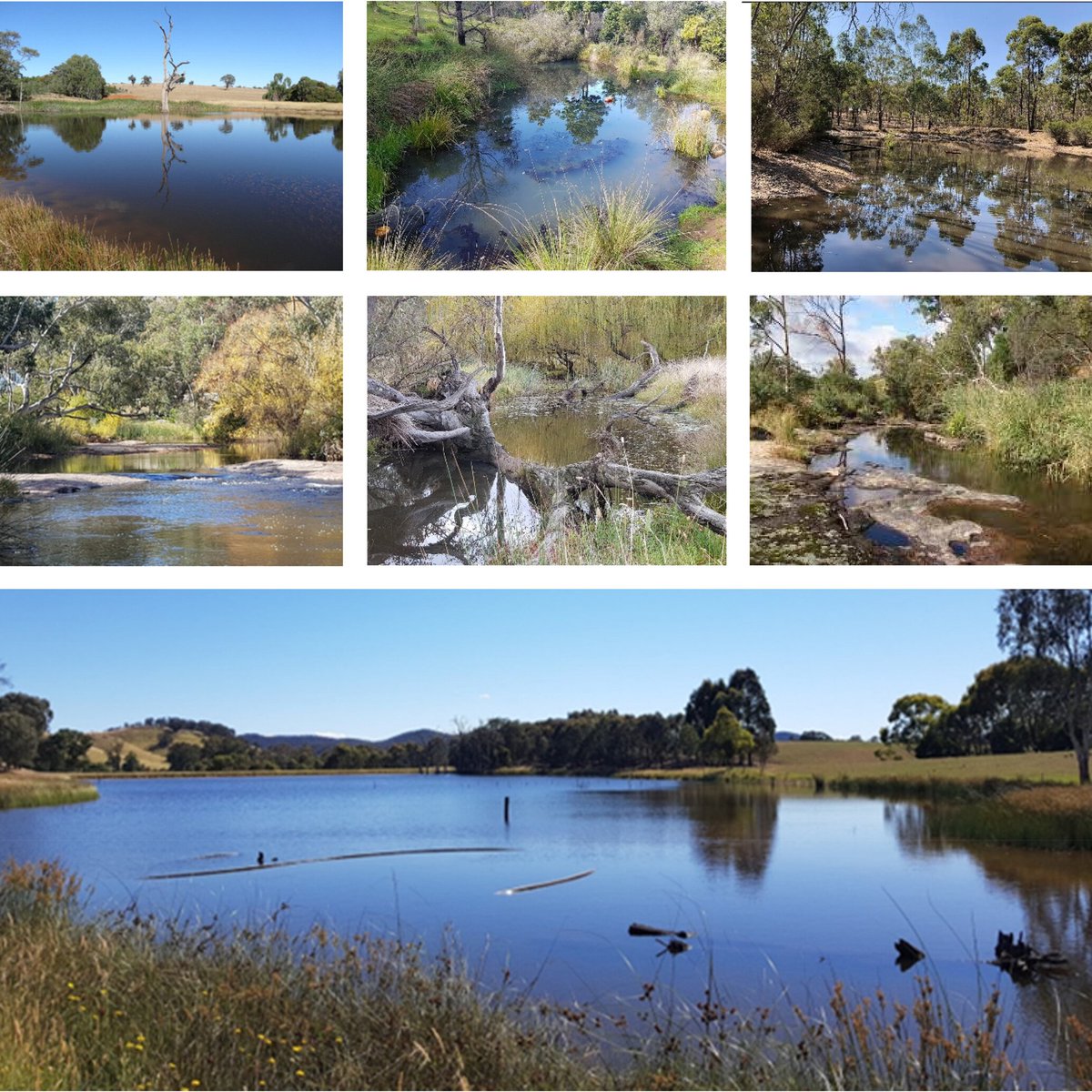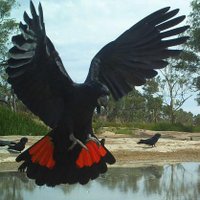
#AustralEcology
@australecology
Austral Ecology publishes original papers describing experimental, observational or theoretical studies on terrestrial, marine or freshwater systems.
ID: 852041850072449024
http://onlinelibrary.wiley.com/journal/10.1111/(ISSN)1442-9993 12-04-2017 06:13:02
2,2K Tweet
2,2K Followers
706 Following

#NaturalHistory note: Fifty percent of male northern quolls survived into their 2nd year in a Pilbara population, likely due to reduced breeding stress & increased rainfall 🌧️. #AustralEcology Ecological Society of Australia Wiley Ecology & Evolution Mitch Cowan Read more: bit.ly/4edor77
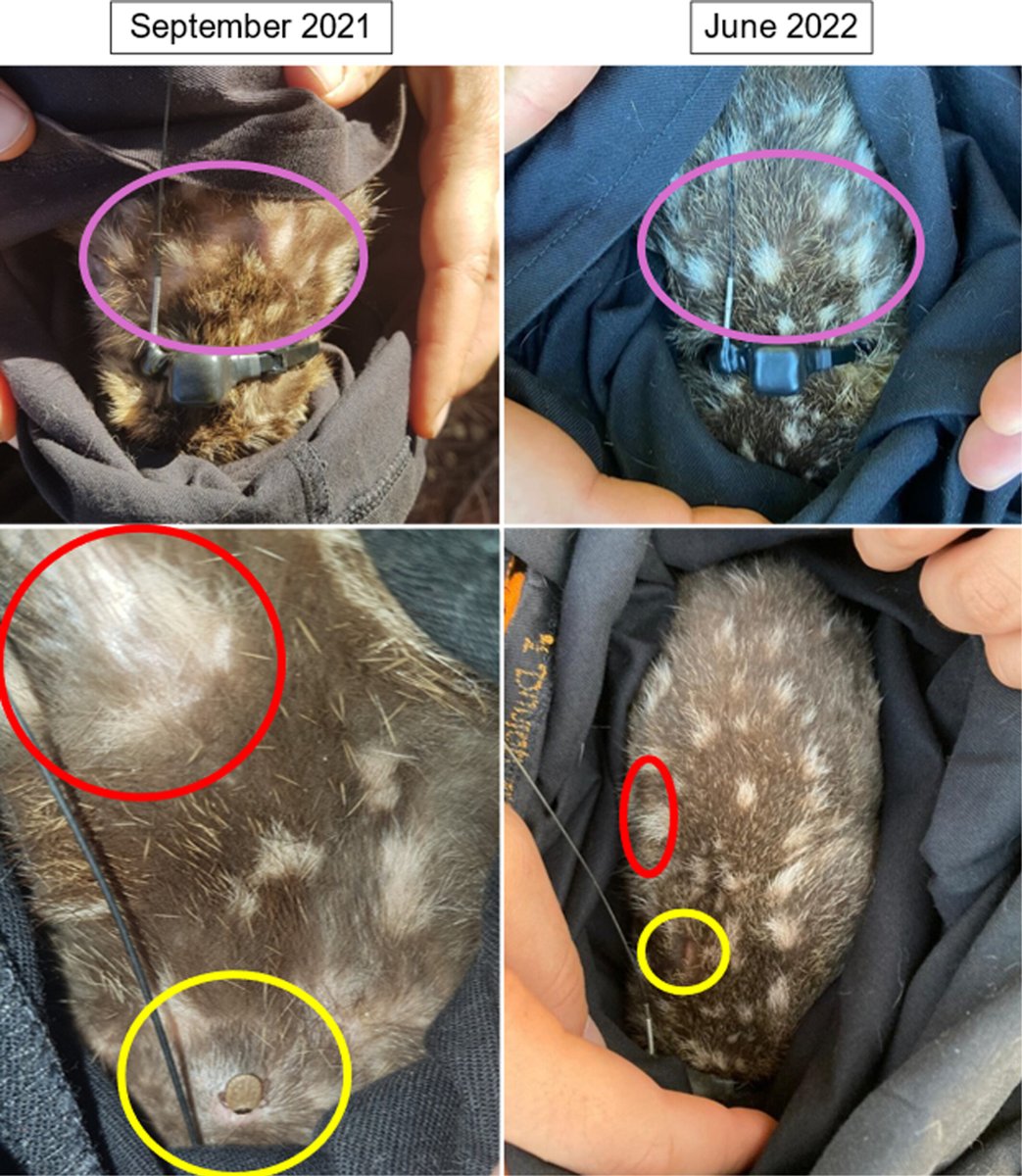

New records show Peru's endemic Black Metaltail using both pollination & nectar robbing, with robbing tied to longer corolla flowers. 36% of foraging events were nectar robbing. #CitizenScience #AustralEcology Ecological Society of Australia Wiley Ecology & Evolution Ettore Camerlenghi bit.ly/4d5YsgA


Exploring the size distribution and stage proportions of Cyrtograpsus species in Playa Cangrejales, Argentina. 🦀 AndreOnorato #AustralEcology Ecological Society of Australia Wiley Ecology & Evolution Read more: bit.ly/3X2U0co


Nuevo artículo en #AustralEcology que explora la distribución de tamaños y proporciones de etapas de las especies de Cyrtograpsus en Playa Cangrejales, Argentina. 🦀 AndreOnorato Ecological Society of Australia Wiley Ecology & Evolution Más información: bit.ly/3X2U0co


Brushtail possums are becoming recognised as key clean-up-crew members for local carcasses in Australia. We explore how widespread possum scavenging on carrion varies based on bioregion, habitat, and season. Patt Finnerty Ecological Society of Australia Wiley Ecology & Evolution bit.ly/3YbYb7t


Prescribed burning is frequently used in savanna vegetation in Australia and worldwide. An experiment was established to test for non-target impacts of prescribed burning on herbaceous vegetation. bit.ly/4dO2Em9 Wiley Ecology & Evolution Ecological Society of Australia


New #NaturalHistory note in #AustralEcology finds Didelphis albiventris (opossum) consuming nectar from Hymenaea cangaceira, a bat-pollinated tree in Brazil's Caatinga. Could opossums be key nocturnal pollinators? Ecological Society of Australia Wiley Ecology & Evolution Read more: bit.ly/4d2pANq
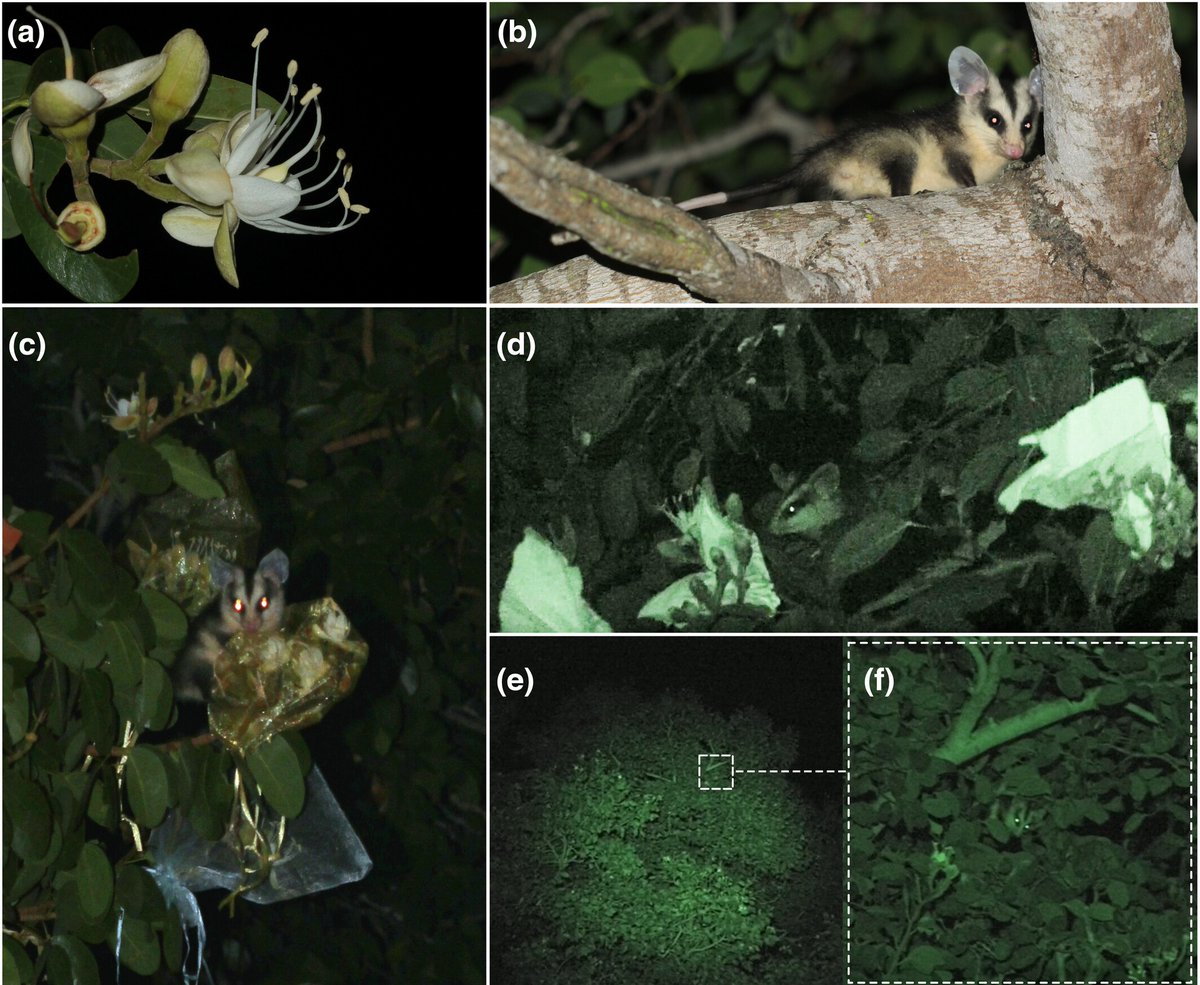

Nova nota de #HistóriaNatural em #AustralEcology revela Didelphis albiventris (gambá) consumindo néctar de uma árvore polinizada por morcegos na Caatinga brasileira. Será que os gambás são polinizadores noturnos importantes? Ecological Society of Australia Wiley Ecology & Evolution bit.ly/4d2pANq

The resilience of restored and remnant habitats is being reduced by Australia’s ever changing climate, challenging scientists to think of practical (and effective) solutions for building resilience. Sacha Jellinek Wiley Ecology & Evolution Ecological Society of Australia Explore further: bit.ly/3MR1Cuo

New #AustralEcology study reveals roadkill threats in Paraguay's Chaco. Over 15 months, 2338 carcasses from 87 species were found on a 250km road. Urgent need for targeted mitigation strategies for mammals, birds, and reptiles. Ecological Society of Australia Wiley Ecology & Evolution bit.ly/3TPGR5L


Artículo revela amenazas de atropellos en el Chaco paraguayo.En 15 meses se registraron 2338 cadáveres de 87 especies. Es urgente implementar estrategias de mitigación específicas para mamíferos, aves y reptiles Ecological Society of Australia Wiley Ecology & Evolution #AustralEcology bit.ly/3TPGR5L


New comic in #AustralEcology now available on: bit.ly/40euynm Ecological Society of Australia Wiley Ecology & Evolution comic drawn by Claire Duncan read the #OpenAccess paper here: bit.ly/4d5YsgA
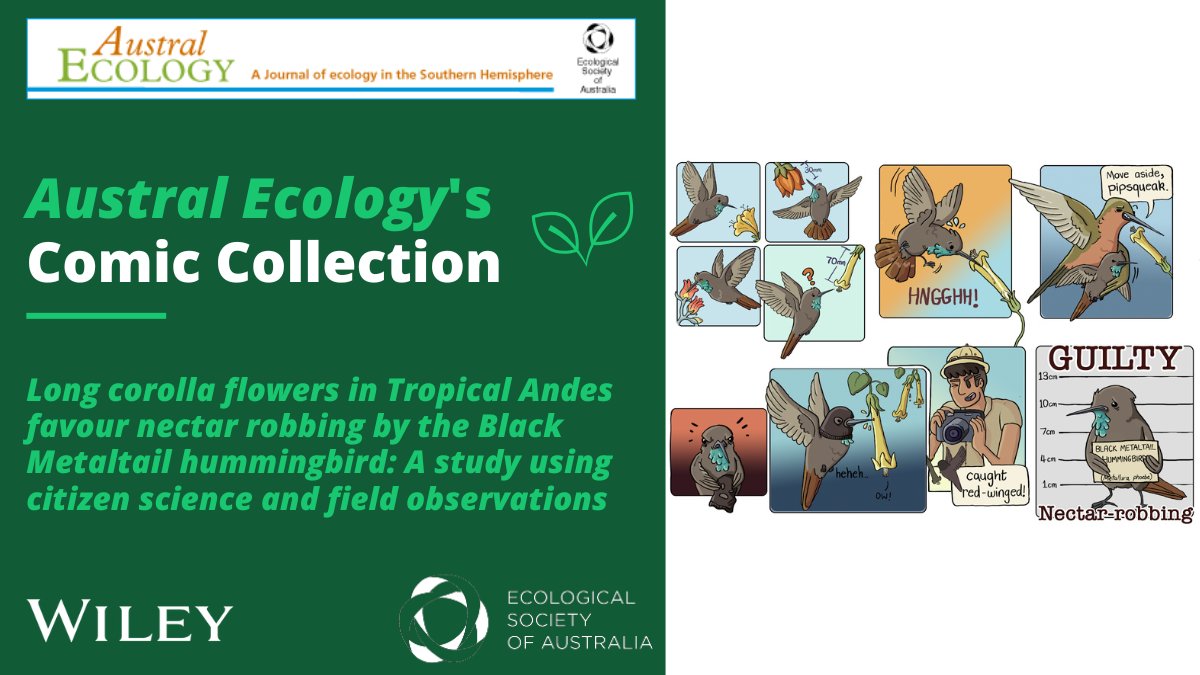

Spatial and temporal population trends pre- and post-predator exclosure fencing establishment in semi-arid Western Australia reveals minimal net negative to positive impact on small native non-target vertebrate species. Ecological Society of Australia Wiley Ecology & Evolution bit.ly/3Yh2hdc


New in #AustralEcology: Saxicolous meadows in Patagonia act as refugia for cold-adapted plants, with high species diversity despite their small area. It is vital to protect these unique ecosystems from fire, invasions and grazing Ecological Society of Australia Wiley Ecology & Evolution bit.ly/3Zz9o2W
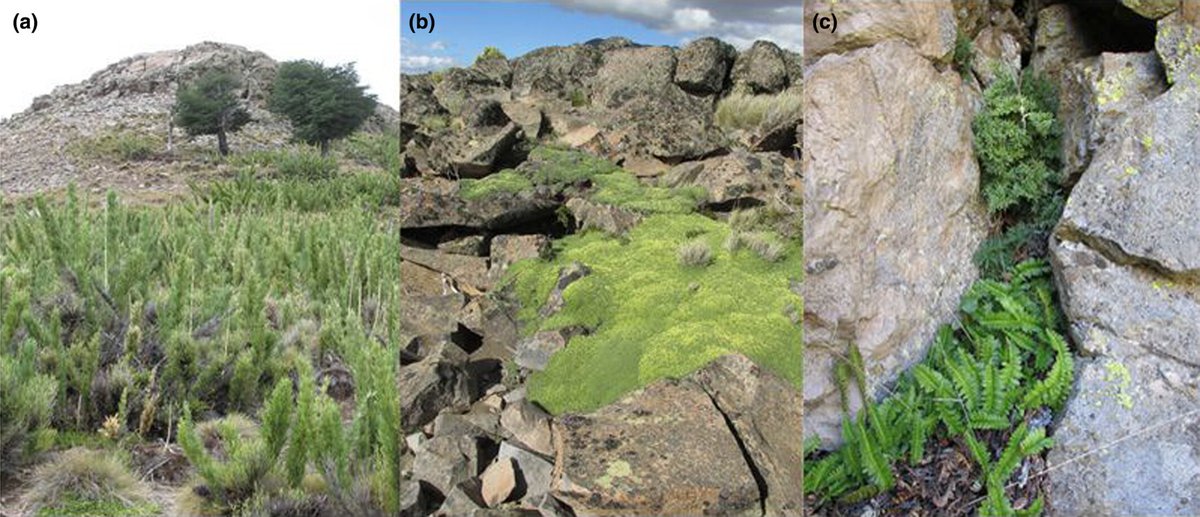

Los pastizales saxícolas en Patagonia actúan como refugios para plantas adaptadas al frío, con alta diversidad en una pequeña área. Es vital proteger estos ecosistemas del fuego, invasiones biológicas y pastoreo Ecological Society of Australia Wiley Ecology & Evolution #AustralEcology bit.ly/3Zz9o2W


In the Amazon, dung beetle perching dynamics vary by species and body size. Larger individuals perch higher, but leaf area also influences perch height. #AustralEcology Ecological Society of Australia Wiley Ecology & Evolution bit.ly/3TRemVk 📸:Guillaume Delaitre


In coastal plains of the Atlantic Forest, tadpole communities in ponds with lower environmental complexity show more closely related species than expected by chance, creating a clustering structure. #AustralEcology Ecological Society of Australia Wiley Ecology & Evolution bit.ly/40hzSX9


#NaturalHistoryNote: Birds using mammal hair for nests is well-known, but kleptotrichy—hair plucking from live animals—is rarely reported! Read more about this behaviour captured in a camera trap in Chile. bit.ly/4e3DL5r #AustralEcology Ecological Society of Australia Wiley Ecology & Evolution
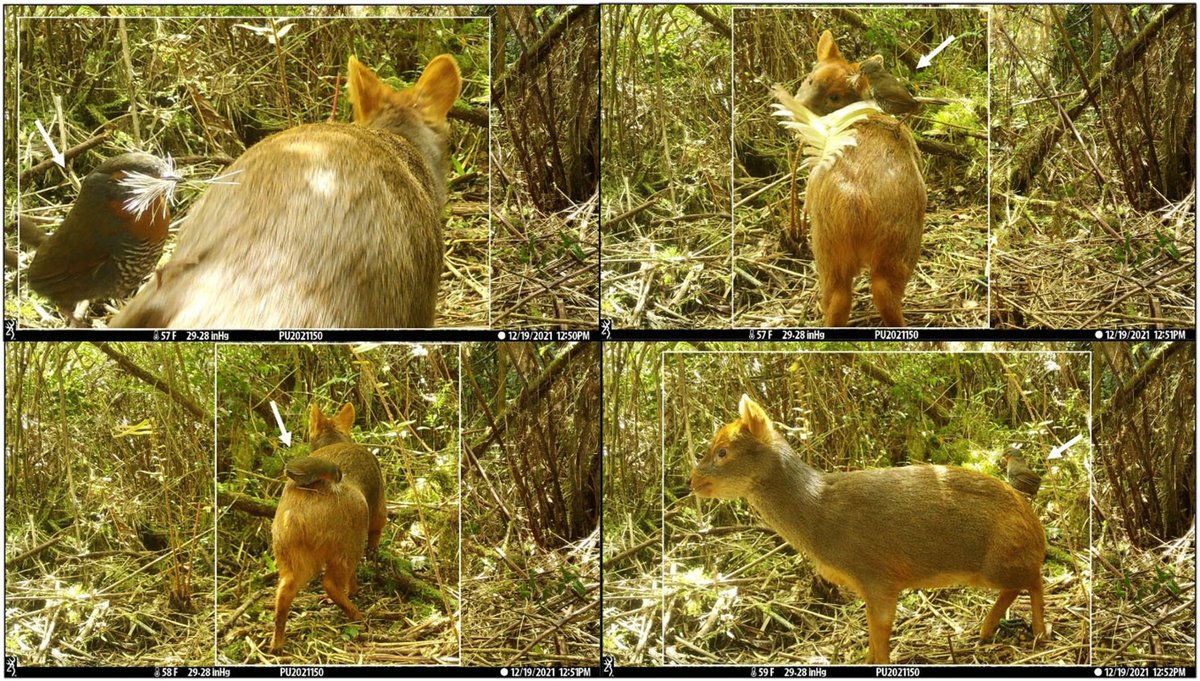

El uso de pelo de mamíferos por aves es bien conocido, pero la cleptotriquia,arrancar pelo de animals vivos, se reporta raramente! Lee más sobre este comportamiento captado por una cámara trampa en Chile. bit.ly/4e3DL5r #AustralEcology Ecological Society of Australia Wiley Ecology & Evolution


With freshwater fish facing global extinction risks, this #AustralEcology study finds semi-artificial farm dams can serve as refuge habitats for threatened species like the southern pygmy perch. Ecological Society of Australia Wiley Ecology & Evolution bit.ly/3Uwz5Ox
